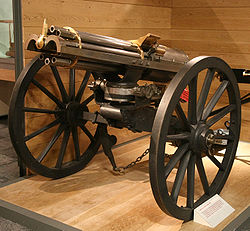When you study the history and development of the modern firearm it soon becomes obvious that it was done in small increments.
The first gun was just a small cannon tied to a stick. Then came match locks, flintlocks. Mean while black powder was being improved into smokeless. The ignition system was moving along from striking a spark to a percussion cap.
Soon someone was putting rifling in barrels to make the projectile more accurate. Then breech loading, cartridges and semi- auto actions followed.
To me it seems like progress stopped around WW2. We have had plastics become part of the modern firearm - since the M16 ???
So my question is "What new development is coming to guns ???" Anybody have any ideas about the next step ??
My thought is that guns have come about as far as they can and the next step will be a leap frog technology that obsoletes firearms. Well, maybe.
The first gun was just a small cannon tied to a stick. Then came match locks, flintlocks. Mean while black powder was being improved into smokeless. The ignition system was moving along from striking a spark to a percussion cap.
Soon someone was putting rifling in barrels to make the projectile more accurate. Then breech loading, cartridges and semi- auto actions followed.
To me it seems like progress stopped around WW2. We have had plastics become part of the modern firearm - since the M16 ???
So my question is "What new development is coming to guns ???" Anybody have any ideas about the next step ??
My thought is that guns have come about as far as they can and the next step will be a leap frog technology that obsoletes firearms. Well, maybe.


